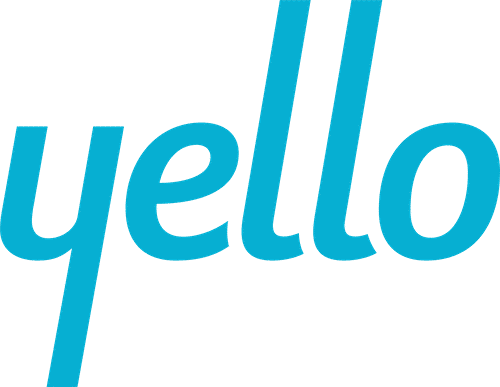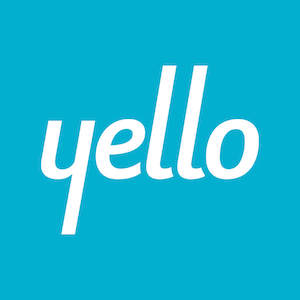Acting as host and moderator was George Jackson, Vice President of Events at GovExec. Our three featured panelists, each sharing a variety of ideas and potential solutions, were Charles Barber, Chief Diversity and Inclusion Officer for the National Science Foundation. Wonzie Gardner, Chief Human Capital Officer for the National Science Foundation. And Jon Newman, Director of Federal Programs at Yello.
The conversation centered on these key topics:
- Streamlining the hiring process
- Automating processes through technology
- Best practices for candidate engagement
- Leveraging data to improve outcomes
Here are some of the insights our speakers were pleased to share:
Automating your hiring process is key.
At the National Science Foundation (NSF), technology is helping them bring in young people, in a way that gets them excited for the future. Additionally, Wonzie noted that NSF has increased paid internships by 20% this past year, so potential hires can join the team full time with an understanding of what their new job will entail.
Because it currently takes NSF about 81 days between application and hiring, Wonzie is working to change this laborious process. They are incorporating more of an AI approach in their hiring process, using automation to shorten the time it takes to hire. They are also improving their talent assessment process, going beyond “skills” listed on a resume to determine if the candidate has the knowledge and capabilities for a particular job.
Charles added that NSF is building a DEI maturity model to help them take advantage of the full spectrum of diverse talent that society has to offer. He pointed out this is both for the sake of advancing science and for the sake of national security. Bringing DEI talent in is just one part of the picture; they are looking at how they can retain this talent as well.
Jon said that if your organization is simply posting jobs and vacancies and hoping people apply, you’re about 10 to 15 years behind the curve. Leveraging technology is a no-brainer in today’s world, as it creates an environment where organizations can focus on candidate quality, not necessarily quantity. He also mentioned that to be proactive at identifying top quality talent, organizations should have dedicated recruitment and outreach teams.
“I tell people all the time that if I fish from the same pond every day, I’m going to get the same type of person. I’ve got to expand that pool to make sure that we’re attracting diverse talent. We want to make sure that our federal workforce looks like America’s quilt, it has all different colors, genres and things, as we move forward.”
Wonzie Gardner, Chief Human Capital Officer at NSF
Engagement is a continuous process.
Traditional methods of candidate outreach like phone calls and emails are still important pieces in your engagement toolbox, but reaching the current generation calls for a higher touch environment. Jon stressed that a broad recruitment and outreach strategy requires mixing these traditional tools with social media and other new methods.
Jon advocates using the channels preferred by Gen Z to tell your organization’s story consistently in order build your employer brand and connect with potential applicants. Some tactics that are successful include quarterly newsletters, brief day in the life videos, and spotlighting current employees. Any warm, nurturing touch point that goes the extra mile to differentiate you as an organization and set you apart.
Wonzie commented that NSF is advertising a lot differently today than in years past. They find that a lot of their younger candidates look at sites such as Handshake and Linkedin. They are also going out to minority-serving institutions and HBCUs to make sure they are attracting a level of DEIA candidates that will make their employee base look like the rest of the country.
Charles wholeheartedly agreed with these points. He remarked that Jon’s and Wonzie’s remarks stood out for showing that diversity and merit do not have to be at odds with each other. He said he is very proud of both Wonzie’s communication leadership and Jon’s progressive thought leadership.
“Gen Z candidates expect and want to be engaged with all the time. They want to hear how you’re committed to diversity in the workforce, and they really value authenticity — which requires many touch points and higher levels of engagement than the old school method of posting jobs to USAJobs and hoping that people apply.”
Jon Newman, Director of Federal Programs at Yello
Use data and metrics to advance strategy.
There was common agreement that data plays a major role in tracking progress, in achieving successful DEIA outcomes and meeting hiring goals. Charles firmly believes that diversity is a deliberate outcome that will not happen overnight, nonetheless his team at NSF is routinely asked “What kind of metrics are you putting in place to really show that you’re making DEI progress?”
Charles’s answer is to take their various federal occupational specialties and link them to data provided by the Bureau of Labor Statistics, the Census Bureau and the Department of Labor. By pulling in employment profiles and diversity characteristics, he can ascertain the level of diversity that can be achieved if that segment of society were available. This identifies areas where NSF is under-represented, and through predictive analysis can report when they can reach population parity. In particular, Charles considers this data framework to make NSF continuously competitive with the private sector.
Wonzie added that NSF is not looking for a quota, but looking for the best candidate. By using data to expand their pools, and looking at DEI as being an outcome rather than an input, they are masking better decisions on human capital management.
In addition, Wonzie shared that NSF has made a committed effort to have more data scientists on board to interpret the data, tell what it’s forecasting, and make choices that are more predictive than reactive. They are also using data to drive how retirements are handled, so they can more easily fill vacant positions with younger generations of folks.
Jon mentioned that senior leaders across organizations will often ask hiring managers, “These people we hired seem to be great. Where’d you find them?” If you don’t have data and metrics, don’t have technology, don’t have a proactive plan, then you don’t have an answer to that.
When you leverage technology, Jon says, you can let data tell the story. For example, you can respond “Okay, we went to this three-day recruitment event, we engaged with 150 candidates, and 25% of those were what we consider top tier candidates. We extended this many on-the-spot offers at this recruitment event.” When you have a quantitative measure of your outcome, you can accurately assess your return on investment.
As a closing comment, Wonzie shared what a former boss had told him: “When I start hiring people that look like me and think like me, my organization dies. If I want my organization to live, I’ve got to hire people that do not only think like me, but people that think counter to what I’m thinking, so I can make sure that we’re looking at things from all perspectives. Because when you look at things from one lens only, you lose out.”
To close out the live session, Jon demonstrated how Yello’s technology offerings can help federal government organizations achieve the early talent hiring outcomes they need to advance their workforce.
Watch the webinar on demand for the full conversation.


